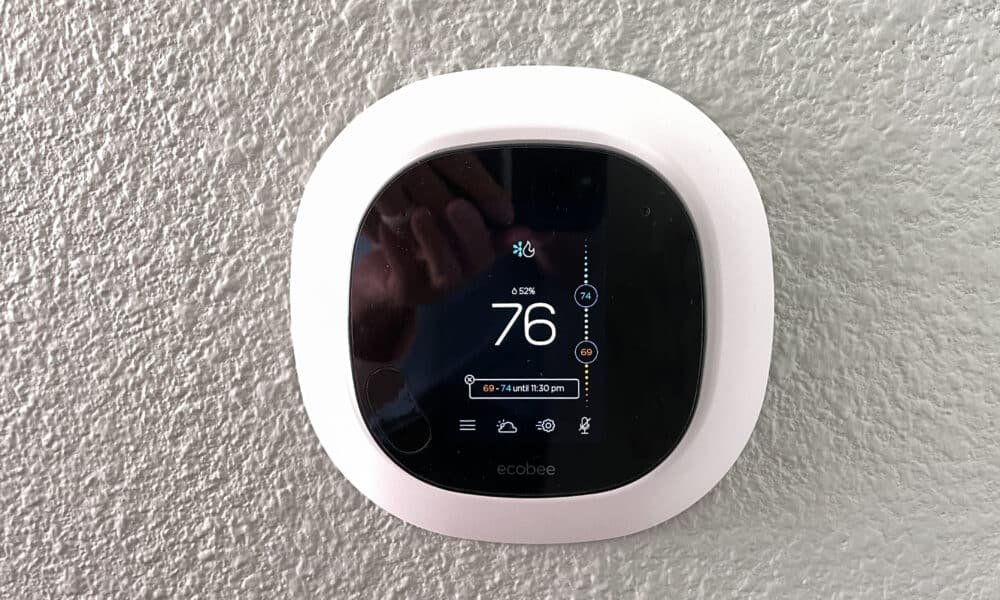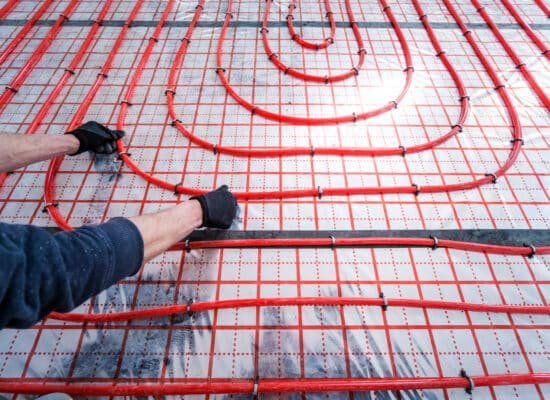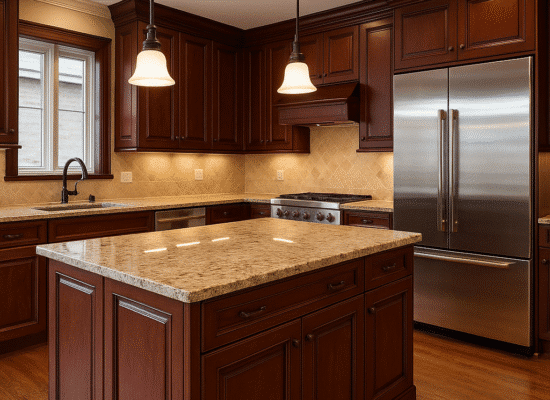What is a Smart Thermostat?
A smart thermostat is a Wi-Fi-enabled device that replaces your traditional thermostat and gives you remote access, programmable scheduling, learning capabilities (some models adapt to your habits), and integration with smart-home systems (voice assistants, sensors, etc.).
Instead of simply changing a setting, you get a thermostat that can anticipate your needs, adjust when you’re away, and potentially reduce your HVAC energy usage. The “smart” part comes from connectivity, algorithms, and data insights.
Table Of Content
- Typical Cost Overview for 2025
- Cost Breakdown Table (Material + Labour)
- What Drives the Cost Up (and Down)
- Wiring / HVAC Compatibility
- Thermostat Model & Features
- Labour Rates & Regional Variation
- Number of Zones / Multi-Thermostat Setup
- DIY vs Professional Install
- Smart Thermostat Brand & Product Price Examples
- Is It Worth It? Savings & Value
- Should You Do It? Pros & Cons
- Pros
- Cons
- Conclusion
- FAQs
- Regional Cost Estimates (2025)
- Rebate & Incentive Programs in 2025
Typical Cost Overview for 2025
Here’s what the numbers show for typical U.S. installations in 2025:
-
The combined cost of the smart-thermostat unit plus professional installation ranges from $200 to $500 on average.
-
The unit (material) alone can cost about $70 to $280, depending on brand and features.
-
Labour typically runs in the ballpark of $130 to $220, assuming wiring is straightforward.
-
For more complex installations (older wiring, multi-zone HVAC, system upgrades), the cost can go much higher — even up to $600 or more.
So when budgeting in 2025, think of the base range $200-$500 as realistic for many homes, but be aware of the risk of extra costs.
Cost Breakdown Table (Material + Labour)
To make it visual and clear, here’s a table showing likely cost ranges:
| Scenario | Thermostat Unit Estimate | Labour / Installation Estimate | Total Estimate |
|---|---|---|---|
| Basic smart-thermostat swap (compatible wiring) | $80 – $150 | $100 – $150 | $180 – $300 |
| Mid-range smart model + standard install | $150 – $250 | $130 – $220 | $280 – $470 |
| High-end model / complex install (wiring upgrade, zoning) | $250 – $400+ | $200 – $350+ | $450 – $750+ |
Note: Your region, wiring condition, HVAC system type, and installation complexity may shift you above or below these ranges.
What Drives the Cost Up (and Down)
Wiring / HVAC Compatibility
If your home lacks a “C-wire” (common wire) or has older wiring, installation becomes more involved — adding time, materials, and cost.
Conversely, if your wiring is already smart thermostat-friendly, you stay on the lower end of the range.
Thermostat Model & Features
More advanced models (learning capabilities, room sensors, voice control, geofencing, multi-zone support) cost more for the unit and sometimes more for the install. For instance, smart-thermostat units alone can cost up to $800 for top-tier models.
Choosing a simpler model keeps the material cost lower.
Labour Rates & Regional Variation
Labour costs depend on location (urban vs rural), local contractor rates, access difficulty, and whether the install is straightforward or involves extra wiring or HVAC system changes.
Number of Zones / Multi-Thermostat Setup
Installing multiple smart thermostats (zoned HVAC systems) or large homes often increases both unit and labour costs.
DIY vs Professional Install
If you’re comfortable, installing yourself can eliminate labour cost — but you must check compatibility, safety, and warranty conditions. Some sources say DIY installs reduce cost substantially.
Smart Thermostat Brand & Product Price Examples
Here are several smart-thermostat unit examples (material cost) currently in the market. These help illustrate how the “material” portion of the cost varies by brand and model.
-
Google Nest Smart Thermostat: Unit price around $89.99. Entry-level premium brand.
-
Ecobee Smart Thermostat Premium: Unit price around $259.99. High-end, lots of advanced features.
-
Ecobee Smart Thermostat Essential: Unit price around $139.99. Mid-premium model, strong value.
-
Honeywell Home X2S Smart Thermostat: Unit price around $79.99. Budget Matter-enabled smart model.
-
Amazon Smart Thermostat: Unit price around $79.99. Budget smart thermostat with basic features.
-
Honeywell Home T5 Smart Thermostat: Unit price around $99.99. Mid-brand value model.
Example installation cost scenarios:
-
If you choose the Amazon Smart Thermostat (unit $80) and you have compatible wiring, you might pay $80 (unit) + $120 (labour) = $200 total.
-
If you choose the Ecobee Premium ($260 unit) and require wiring upgrade, you might pay $260 + $250 labour = $510 total.
-
If you live in a high-labour region or have multi-zone HVAC, you could see $300+ labour + $260 unit = $560+ total.
Is It Worth It? Savings & Value
The smart thermostat isn’t just a convenience — it often translates into energy savings. Many sources estimate 10-20% savings on heating/cooling bills when used properly.
For example, if your annual HVAC cost is $2,000, a 10% savings is $200 a year — meaning in 2-3 years you could recoup a $400-$500 investment.
Beyond savings:
-
Better comfort (remote control, scheduling, geofencing)
-
Integration with smart-home ecosystem
-
Potential increase in home appeal/resale value
On the flip side:
-
If your wiring is incompatible, cost goes up
-
If you move soon, you may not fully capture savings
-
If your climate or usage is mild, savings may be minimal
Should You Do It? Pros & Cons
Pros
-
Remote access via smartphone/app
-
Scheduling and learning features reduce wasted energy
-
Integration with voice assistants and smart-home systems
-
Often quick install for compatible homes
-
Can monitor usage and adapt for improved efficiency
Cons
-
Upfront cost (unit + labour) may feel significant
-
Compatibility issues (older wiring, no C-wire) may add cost
-
Requires WiFi and app management
-
Savings vary widely depending on your habits, climate, and system
-
If you move soon, payoff may be limited
Conclusion
Upgrading to a smart thermostat in 2025 can be a smart move — blending enhanced comfort, smarter control, and real energy-saving potential. With average combined costs (unit + installation) in the $200-$500 range for many homes, it’s an accessible upgrade. Of course, more complex installs push toward $600+ — so budget responsibly.
The key: check compatibility (wiring and HVAC), choose the right model for your needs, and consider how long you’ll stay in the home to let the savings play out. If your wiring is ready, you’re comfortable with smart-home tech, and you use heating/cooling significantly, a smart thermostat upgrade could pay for itself in just a few years.
FAQs
1. How much does it cost to install a smart thermostat?
On average, about $200 to $500, including unit + labour, for a typical single-thermostat install in 2025.
2. Can I install a smart thermostat myself and save money?
Yes — if you’re confident with wiring, your system is compatible, and there are no surprises. DIY can reduce labour cost, but you need to verify compatibility and consider warranty/risk.
3. What extra costs should I watch out for?
Wiring upgrades (adding a C-wire), dealing with multi-zone systems or heat pumps, or paying higher labour in some regions can add $100+ to your cost.
4. How much can I save on my energy bills?
Many estimates say 10-20% on heating/cooling costs, depending on usage, system, climate, and how you use the thermostat.
5. Are all HVAC systems compatible with smart thermostats?
Not automatically. You’ll need to check voltage (24 V vs line), whether a C-wire is present, if your system is a heat pump or multi-stage, and which features you want.
6. Which smart thermostat is best for my home?
That depends on your budget, features desired, HVAC system, and smart-home integration. For example:
-
Budget: Amazon Smart Thermostat (~$80)
-
Mid: Honeywell X2S or T5 (~$80-$100)
-
Premium: Ecobee Smart Thermostat Premium (~$260)
Choose a model that matches your system and your smart-home plan.
Regional Cost Estimates (2025)
While detailed state-by-state breakdowns are scarce, the following table provides a rough comparative estimate by region based on national averages and varied labour/installation conditions:
| Region | Typical Total Cost (Unit + Install) | Notes & Factors |
|---|---|---|
| Northeast (NY, MA, PA) | $250 – $500 | Higher labour rates, older wiring common |
| Midwest (IL, MI, OH) | $200 – $450 | Moderate labour, many existing compatible homes |
| Mountain West (CO, UT, ID) | $220 – $480 | Varied labour costs, HVAC systems may be more complex |
| Pacific Northwest (WA, OR) | $200 – $450 | Good labour availability, moderate wiring issues |
| South / Southeast (TX, FL, GA) | $190 – $400 | Lower labour costs, but simpler systems may reduce labour scope |
| Example: Anchorage, AK | $362 – $730 | Remote location + complex climate raise cost significantly |
Sources:
-
National averages: $200-$500 for smart thermostat install.
-
Anchorage example: $362-$730 range.
Tip for your readers:
Mention that they should check local labour rates, wiring condition (presence of C-wire), and whether the HVAC system is basic or zoned/complex — these variables cause wide regional variation.
Rebate & Incentive Programs in 2025
Here are some of the active rebate or incentive programs for smart thermostats that your audience can benefit from:
-
Con Edison (NY-area): Up to $85 rebate when enrolling an eligible smart thermostat.
-
Golden State Rebates (California): Up to $75 instant rebate for qualified smart thermostats.
-
Puget Sound Energy (WA): Rebate available for purchase + install + connection of qualifying smart thermostat by 12/31/2025.
-
Focus on Energy (Wisconsin): Qualified smart thermostats are eligible for $50 rebate.
-
Empire Electric Association (Colorado): $25 per thermostat rebate, or $50 if on a Time-of-Use rate.
-
ENERGY STAR Rebate Finder (National): Utility-level programs; searchable by zip code for smart thermostat rebates.
Tax credits:
-
The Inflation Reduction Act and related home-energy credits may cover broader energy-efficiency upgrades, possibly including smart thermostat installations as part of a larger system upgrade.













